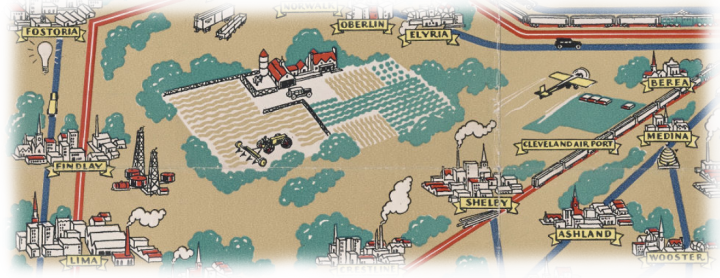
Maps with pictorial elements have a long history. Medieval and early modern maps frequently had pictures of people, places, and objects on the map or in the map border. In the midnineteenth century, bird’seye views became popular, particularly in the United States, and established the oblique view as a common way of looking at the earth’s surface. In the early twentieth century, the great explosion of popular culture in Europe and North America produced an outpouring of brightly colored pictorial maps. By the mid1920s, the United States was at the forefront of pictorial mapping and remained so well into the 1960s. Pictorial maps were produced to show places and regions, to instruct, to amuse, and to advertise products. Pictorial maps were also created to depict World War II, and the prosperity of postwar America. The maps were found in homes, schools, churches, libraries, and offices. Although the golden age of American pictorial mapping is over, artists and cartographers continue to make highly inventive pictorial maps.
The exhibition is organized in seven parts: Early Maps, Maps of Place and Region, Maps to Instruct, Maps to Amuse, Maps for Industry, Maps for War, and Maps for Postwar America.

